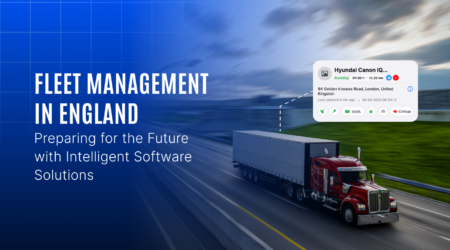As Kenya’s cities grow and roads become increasingly congested, the demand for efficient and safe fleet operations is on the rise. Whether it’s delivery vehicles in Nairobi or commuter transport in Mombasa, fleet operators face mounting challenges in managing drivers, maintaining vehicle health, and ensuring passenger or cargo safety.
GPS tracking in Kenya is emerging as a vital solution. It provides real-time visibility, enhances decision-making, and supports overall fleet safety. With the growth of telematics in Kenya, transport companies are now better equipped to face urban transport challenges, reduce operational risks, and improve service reliability.
Urban Fleet Challenges in Kenya
Kenya’s urban fleet operators face a unique mix of challenges that GPS tracking systems are helping to solve.
- Unpredictable Traffic Congestion
Major cities like Nairobi are known for peak-hour congestion, which leads to fuel wastage, late deliveries, and driver frustration. - Increased Road Incidents
Without proper monitoring, driver behavior can go unchecked. Over-speeding, reckless overtaking, and fatigue are major causes of accidents—impacting fleet safety and company reputation. - Fuel and Asset Theft
In areas with limited oversight, fuel siphoning and misuse of company vehicles are common. Traditional tracking methods often fail to detect these issues in time. - Compliance and Service Monitoring
Fleet owners need proof of route completion, timely service delivery, and vehicle health tracking. Manual logs are no longer efficient in fast-paced city environments.
The Role of GPS Tracking in Kenya’s Urban Transport
The application of GPS tracking in Kenya is expanding rapidly, not just for navigation but as a comprehensive fleet intelligence tool.
Real-Time Location Monitoring
Fleet managers can now view vehicle locations live on a digital map—monitoring trips, stops, and routes with precision.
- Track vehicle movement across urban and peri-urban areas
- Receive alerts for route deviations or unauthorized stops
- Plan dispatch based on vehicle proximity and availability
Driver Behaviour Analysis
GPS systems combined with telematics allow transport companies to monitor how their vehicles are being driven.
- Flag over-speeding, harsh braking, and sharp turns
- Identify risky drivers through performance scorecards
- Encourage safer habits with rewards and coaching
Route and Trip Optimization
Urban GPS data reveals patterns that help improve trip scheduling and reduce journey times.
- Identify and avoid congested roads in real time
- Suggest alternate routes based on traffic conditions
- Reduce idle time and fuel costs through better planning
Asset and Fuel Monitoring
By integrating fuel sensors and geofences, GPS tracking helps reduce losses from unauthorized fuel usage or vehicle misuse.
- Detect sudden fuel drops or refueling outside assigned zones
- Monitor stop durations at each delivery or passenger point
- Set time and location boundaries for vehicles using geofencing
Why Telematics in Kenya Is Growing
Telematics is more than just vehicle tracking—it combines telecommunications and informatics to offer deeper insight into fleet operations. In Kenya, this shift is helping transport providers:
- Digitize their operations and reduce reliance on paperwork
- Access vehicle diagnostics for predictive maintenance
- Improve compliance with transport and safety regulations
- Gain a competitive edge with service quality improvements
With mobile and internet penetration increasing, telematics in Kenya is becoming more accessible to businesses of all sizes.
A Practical Scenario: GPS Tracking in Action
In a typical urban setting in Kenya, system integrators working with small to mid-sized fleets faced several operational challenges. Many of their clients ran delivery and commuter vehicles across Nairobi, Mombasa, and Kisumu—with no structured oversight or digital visibility. The integrators needed a flexible solution that could address these gaps while being scalable and easy to deploy.
Here’s how key features of a GPS tracking system helped solve real problems on the ground:
- Challenge 1: Lack of Trip Visibility and Route Accountability
Fleet owners struggled to confirm whether their vehicles followed assigned routes, leading to delayed deliveries and customer complaints. - Solution:
Live tracking and geofencing features enabled managers to view vehicle locations in real time. Route deviation alerts helped keep drivers accountable, while trip history reports allowed owners to validate completed jobs. - Challenge 2: Driver Misconduct and Unsafe Behaviour
There were frequent reports of harsh driving, extended stops, and risky habits that led to vehicle wear and safety concerns. - Solution:
Driver behaviour monitoring tools helped identify over-speeding, sharp turns, and unnecessary idling. Scorecards allowed fleet managers to offer targeted feedback and initiate driver training based on real data. - Challenge 3: Unexplained Fuel Expenses
Fuel wastage, suspected theft, and irregular refuelling practices made it difficult to track operating costs. - Solution:
Integrators implemented fuel sensor integrations alongside GPS tracking. The system detected sudden drops and logged each refuelling point—allowing owners to compare fuel usage with route data and identify discrepancies. - Challenge 4: Missed Maintenance and Unexpected Breakdowns
Most fleets operated without reminders or digital records, leading to frequent repairs and vehicle downtime. - Solution:
Automated maintenance alerts based on mileage and usage ensured timely servicing. The digital logs gave managers a better overview of each vehicle’s health, helping prevent last-minute issues.
The Outcome:
Within months of implementing the system, integrators observed fewer client complaints, improved delivery timelines, and measurable cost reductions across their customer fleets. The ability to offer a plug-and-play, insight-driven platform not only strengthened client relationships—but also positioned the integrators as long-term strategic partners in Kenya’s growing transport ecosystem.
Benefits of GPS Tracking for Kenyan Fleet Operators
- Enhanced Fleet Safety
With accurate monitoring of driver behavior and road conditions, fleets can reduce accidents and improve overall safety culture. - Improved Operational Efficiency
Real-time tracking and route optimization cut down unnecessary mileage, fuel usage, and idle time. - Better Customer Service
With ETAs, delivery confirmations, and live tracking links, customers get more transparency and confidence. - Theft Prevention and Control
GPS tracking helps detect unauthorized vehicle use, late-hour movement, and fuel fraud—saving costs and protecting assets. - Scalable and Affordable
Modern systems are designed to scale with fleet size—whether you manage 5 vehicles or 500. And with cloud access, the tools are available anywhere, anytime.
Getting Started with a GPS Tracking System in Kenya
If you’re new to fleet automation, start small. Choose a fleet management system that offers the following:
- Live tracking with mobile and desktop access
- Driver behaviour monitoring tools
- Route planning and alert features
- Integration with fuel or load sensors (if needed)
- Reliable support and local partner presence
Look for a solution that’s flexible and can grow with your needs—especially as urban transport continues to evolve across Kenya.
 Conclusion
Conclusion
Urban transport in Kenya is becoming more demanding—but also more data-driven. With the rise of GPS tracking in Kenya, fleet operators now have the tools they need to deliver safer, smarter, and more reliable services. Telematics is becoming essential for fleet safety, performance, and competitiveness—especially in busy urban centres like Nairobi, Mombasa, and Kisumu.
Whether you’re managing deliveries, commuter services, or cargo across East Africa, GPS tracking gives you the control, visibility, and insights you need to succeed.













